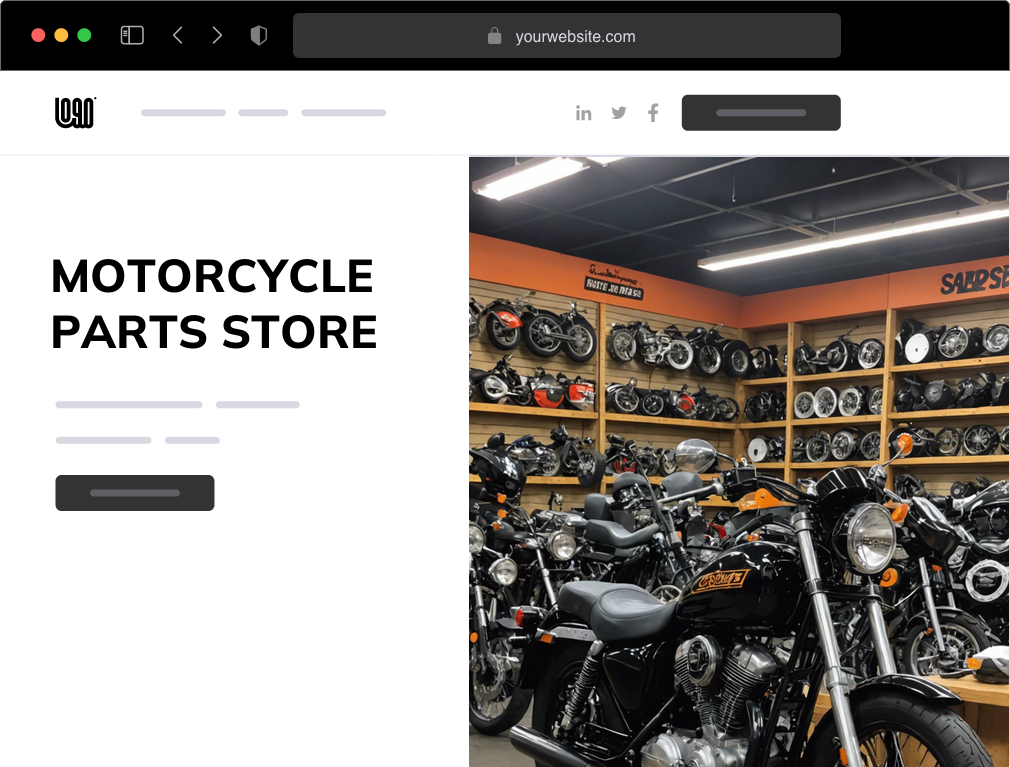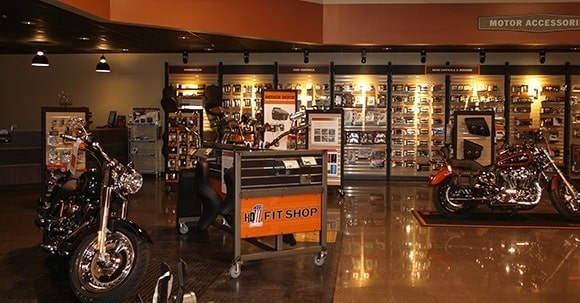Your Go-To Motorbike Shop for Top Quality Parts and Accessories
Your Go-To Motorbike Shop for Top Quality Parts and Accessories
Blog Article
Comprehending the Essential Parts of a Motorcycle: A Comprehensive Guide for Lovers
For bike lovers seeking to raise their riding experience and guarantee their bikes run smoothly, understanding the necessary components of a motorbike is vital. Each aspect, from the engine's intricate functions to the critical role of the stopping systems, not only influences efficiency but additionally safety and comfort. This guide will certainly go through the basic parts that every motorcyclist ought to know with, enabling educated choices in both maintenance and possible upgrades. As we start this exploration, one must ask: how does each element interact to develop the seamless experience every fanatic seeks?
Engine Elements

The camshaft plays an important function in controlling the timing of the engine's valves, guaranteeing the exact opening and closing essential for reliable fuel and air consumption, along with exhaust expulsion. This timing is essential to keeping optimal engine performance and performance. Additionally, the carburetor or fuel shot system, relying on the motorcycle design, is responsible for mixing air with fuel in the right ratio for burning.
The air conditioning system, either air or liquid-based, functions to preserve the engine's temperature within operational limitations, preventing getting too hot and guaranteeing longevity - motocross parts nz. Each component, thoroughly made and integrated, adds to the seamless operation of the engine, defining the motorbike's power result and overall performance
Transmission System
Integral to the motorcycle's functionality, the transmission system makes sure reliable power transfer from the engine to the wheels. This system consists of a number of important elements, including the clutch, gearbox, and final drive, each playing a vital function in converting the engine's power right into motion. The clutch, usually operated by a hand bar, serves to disengage the engine and engage from the transmission, allowing for smooth gear modifications and controlled velocity.
The gearbox, frequently referred to as the transmission appropriate, consists of a set of gears that bikers can by hand shift via to readjust the bike's speed and torque outcome. These gears are prepared in a sequence that allows the motorbike to increase smoothly and preserve optimal engine performance across different speeds. Most motorbikes make use of a sequential transmission, needing the motorcyclist to move gears in a predetermined order.
Braking Devices
While understanding the transmission system is key to taking advantage of a motorbike's power, similarly essential is the ability to regulate and quit that power successfully, which is where braking mechanisms enter into play. Brakes are crucial for security and performance, providing the rider with the required control to navigate different surfaces and conditions. Usually, bikes feature two sorts of braking systems: disc brakes and drum brakes.
Disc brakes are extra widespread in modern motorcycles because of their exceptional performance. They contain a brake disc, caliper, and pads. When triggered, the caliper squeezes the brake pads against the rotating disc, transforming kinetic power right into warm, thus slowing down the wheel. This system offers far better warm dissipation, constant efficiency, and enhanced stopping power, particularly in wet problems.
Conversely, drum brakes, though less typical, are still discovered in some motorbikes. They function by pressing brake shoes against the internal surface of a drum affixed to the wheel. While usually much less efficient in warmth dissipation and v heated motorcycle gloves stopping power, drum brakes are simpler and a lot more cost-effective.
Comprehending these stopping systems' subtleties permits riders to maintain their motorcycles effectively and value the design that guarantees risk-free and reliable stopping.
Suspension and Guiding
Suspension and steering systems are vital components that considerably affect a motorbike's handling and ride comfort. The suspension system, including forks at the front and shock absorbers at the rear, takes in roadway abnormalities, enhancing stability and control. Front forks, normally telescopic or inverted, compress and rebound to alleviate influences, while rear shock absorbers preserve tire contact with the roadway, essential for traction and safety.
Guiding, centered around the handlebars, attaches the biker to the bike's directional control. The steering head bearings guarantee smooth procedure, allowing precise ability to move. Correct alignment and maintenance of these bearings are critical for foreseeable steering response and lowering motorcyclist tiredness.
The suspension's adjustability is an additional important aspect; preload, damping, and rebound setups permit personalization to fit numerous riding designs and problems. This adaptability is important for maximizing performance, whether browsing metropolitan streets or tackling rugged routes. Advancements like digital suspension systems use real-time adjustments, improving adventure quality across diverse surfaces.

Electric Solutions
After guaranteeing a controlled and smooth trip via efficient suspension and steering systems, focus transforms to the electrical systems, a critical aspect of modern motorbikes. These systems play an important role not just in starting the engine yet additionally in powering various elements that enhance the capability and safety and security of the motorbike.
At the heart of a motorbike's electrical system is the battery, which stores you can try here electrical power necessary for beginning the engine and powering supporting systems - motorcycle parts nz. The generator or generator, combined with the rectifier-regulator, makes certain the battery continues to be billed while the motorbike functions, transforming power right into electric power and maintaining voltage levels
The ignition system, another critical part, is accountable for sparking the air-fuel blend in the engine's cyndrical tubes. Modern bikes frequently make use of a digital ignition system, offering better efficiency and integrity contrasted to traditional systems.
Lighting systems, including fronts lights, tail lights, and indications, are also important, making certain exposure and security for the motorcyclist. Added electronic components such as sensing units, control units, and presents add to advanced functions like gas injection administration, anti-lock stopping systems (ABDOMINAL), and digital control panels, additionally enhancing the riding experience.
Conclusion
A comprehensive understanding of a motorcycle's crucial parts, including the engine, transmission system, stopping devices, suspension, steering, and electric systems, is indispensable for enthusiasts aiming to optimize efficiency, comfort, and safety and security. Mastery of these components permits for educated choices regarding upkeep and upgrades, ultimately boosting the riding experience. By integrating this knowledge, motorcyclists can guarantee their bikes operate at peak performance and reliability, thereby taking full advantage of both satisfaction and long life their website of their vehicles.
For bike fanatics looking to elevate their riding experience and guarantee their bikes run efficiently, understanding the important elements of a bike is vital.Important to the motorbike's capability, the transmission system makes sure effective power transfer from the engine to the wheels.While recognizing the transmission system is essential to harnessing a motorcycle's power, equally vital is the capability to regulate and quit that power successfully, which is where braking systems come into play. Usually, motorcycles include 2 types of stopping systems: disc brakes and drum brakes.
A comprehensive comprehension of a motorbike's important components, including the engine, transmission system, stopping systems, suspension, steering, and electrical systems, is essential for lovers aiming to enhance safety, convenience, and performance.
Report this page